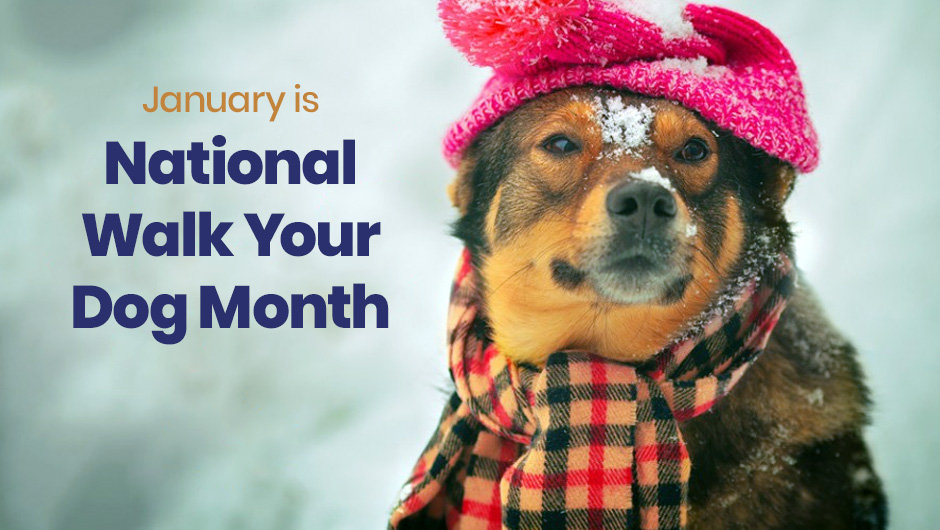January may be cold, but it's also National Walk Your Dog Month. If you don't normally take your dog for a walk each day, the flipping of the calendar to 2017 is the perfect opportunity to create a new habit. Dogs who don't get this necessary daily exercise can develop problem behaviors such as excess chewing, eliminating in the house, separation anxiety, and aggressiveness. Before you get frustrated with your dog, consider if he is getting enough regular exercise.
A Daily Walk Offers Numerous Benefits
The obesity epidemic in the United States is reaching epidemic proportions in both people and pets. Whether in part to our long and cold winters or intentional neglect, Minnesota leads the nation in canine obesity. One easy way to combat this problem is to hit the pavement with your dog at least 30 minutes each day. The next time you're tempted to skip your dog's daily walk, consider the important benefits she will miss:
"¢ Walking can delay or prevent the onset of serious diseases that shorten your dog's lifespan.
"¢ The opportunity for social interaction with other dogs and people.
"¢ The chance to get your undivided attention.
"¢ Walking improves your dog's confidence because it exposes her to a wide range of people, places, situations, and weather conditions.
A daily walk is just as good for you as it is for your dog. No matter what the weather conditions, a brisk half-hour walk each day helps lower the risk of heart attack, stroke, diabetes, cancer, and Seasonal Affective Disorder in humans. So, grab a leash, bundle up, and take your dog for a walk.
Staying Safe During Your Winter Walks
It's not exactly warm and sunny this time of year, yet your dog still needs all of the benefits he receives from a daily walk. To avoid an accident or a cold-related illness, you need to pay attention to seasonal safety. This starts with your dog's paws. Even though he may protest, consider covering them with special dog boots to protect against the chill caused by snow and ice. If you go without booties, be sure to trim excess fur between your dog's toes. This stops ice from sticking to his feet.
Call your dog to you if she is headed for a pile of ice since it may not be strong enough to support her weight. She could also slip and injure herself. It's important to pay attention to the signals your dog sends that she is in danger of developing frostbite or hypothermia. Some of these including faster panting, whining, anxiety, seeming disoriented, and sitting down while on the walk. If any of these occur, head home at once. You can always try your walk again tomorrow.
As always, please contact us at Minnesota Veterinary Hospital if we can be of further assistance.
Photo credit: VVVita / Getty Images

